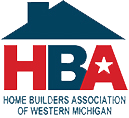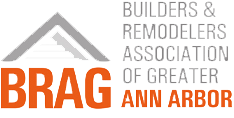
GSW // FGIA NEW CODE 2021
The COVID-19 pandemic has impacted the adoption of some codes in the U.S., but code cycles continue, including those for the I-codes. The Fenestration and Glazing Industry Alliance (FGIA) held a “U.S. and Canadian Codes Report” session during its 2021 Virtual Annual Conference to keep its members informed about the latest in codes.
ICC Updates
Kathy Krafka Harkema, U.S. codes and regulatory affairs manager for the association, began with an update on the International Code Council (ICC). She explained that on January 21, 2021, the ICC board met virtually and heard testimony from 55 different people on the International Energy Conservation Code (IECC). The ICC board has announced that it’s considering shifting the IECC from the current code development process into a standards development process.
Krafka Harkema explained that the intent is to strengthen the IECC and its adoptability. From 2006 to 2021, the IECC’s energy efficiency requirements increased by about 40%, for an average of 8% per code cycle.
The U.S. House Committee on Energy and Commerce has gotten involved, citing the fact that the “IECC is an important element of national energy policy and a major tool in our efforts to address climate change” as its reasoning. The Committee began a probe into the ICC following a New York Times article claiming that the ICC has an undisclosed written agreement with the National Association of Home Builders (NAHB).
Krafka Harkema said the article alleges that NAHB “has reportedly blocked changes in building codes intended to make new homes more energy efficient and resilient to the impacts of a changing climate.” It also claims that the move to a standards process “has raised concerns among stakeholders that state and local officials could be effectively eliminated from providing meaningful input on future revision to energy building codes.”
The House Committee asked the ICC why NAHB was guaranteed seats on ICC committees and asked the board to provide any written agreement between the ICC and NAHB. In response, NAHB chair Chuck Fowke denied the allegations and said, “While NAHB members participate on committees considering proposed changes to the IECC, they are not allowed to participate in final votes that are reserved for building code and government officials. While participating in model code development, home builders are not trying to prevent the adoption of new technology, the embrace of new materials or the promotion of energy efficiency. Rather, builders strive to prevent unreasonable, impractical or costly building code requirements that do not promote enhanced structural integrity, improved safety or provide a reasonable payback to the homeowner.”
The ICC responded to the inquiry with a 20-page letter and stated that its model code development process “is open and transparent” and that volunteer government officials have the most control in the process.
Krafka Harkema said the ICC will next meet on March 3, 2021. However, it’s uncertain whether they will make a decision about the IECC at that time.
The ICC released a new code adoption database on January 19 to show which codes each state has adopted. On December 8, 2020, the U.S. Department of Housing and Urban Development (HUD) recognized the 2009 ICC A117.1, Accessible and Usable Buildings and Facilities Standard; the 2009 International Building Code (IBC), 2012 IBC and 2018 IBC as “safe harbors” for compliant with the Fair Housing Act’s accessibility requirements. The HUD’s final rule on this goes into effect March 8.
The I-Codes are now in the Group A cycle. Of interest to the glass industry are the IBC, International Fire Code, International Mechanical Code, International Residential Code (IRC) and the International Wildland-Urban Interface Code. Group A code proposed changes were published at iccsafe.org on March 1. Virtual committee action hearings will take place April 11-May 5 with a report expected to be posted on May 24. July 2 is the deadline for filing public comments and public comment hearings will take place September 22-29, either in Pittsburgh or virtually depending on the pandemic.
Group B proposals will be due January 10, 2022 and Krafka Harkema said that FGIA will begin considering ICC Group B proposals in October 2021.
State Updates
Krafka Harkema updated members that some Florida localities are considering changing their turtle ordinances to require glass with 15% rather than 45% visible light transmission.
While the rule still uses the 45% or less inside to outside transmittance standard for tinted glass, the Florida Wildlife website now recommends 15% transmittance.
“We’re trying to figure out who recommended this and what science it’s based on so we can determine how best to engage with localities,” said Krafka Harkema.
She also explained that a coalition with more than 30 individuals from the FGIA, Window and Door Manufacturers Association, Cornell Meteorology and other organizations have formed a hurricane research advisory committee to prioritize proposals and recommendations for the Florida Building Commission for funding.
Many states have updated newer versions of the I-codes and Krafka Harkema recommended always checking with local code officials in case codes have changed or adoption has been delayed.
“If in doubt, check it out,” she said.








